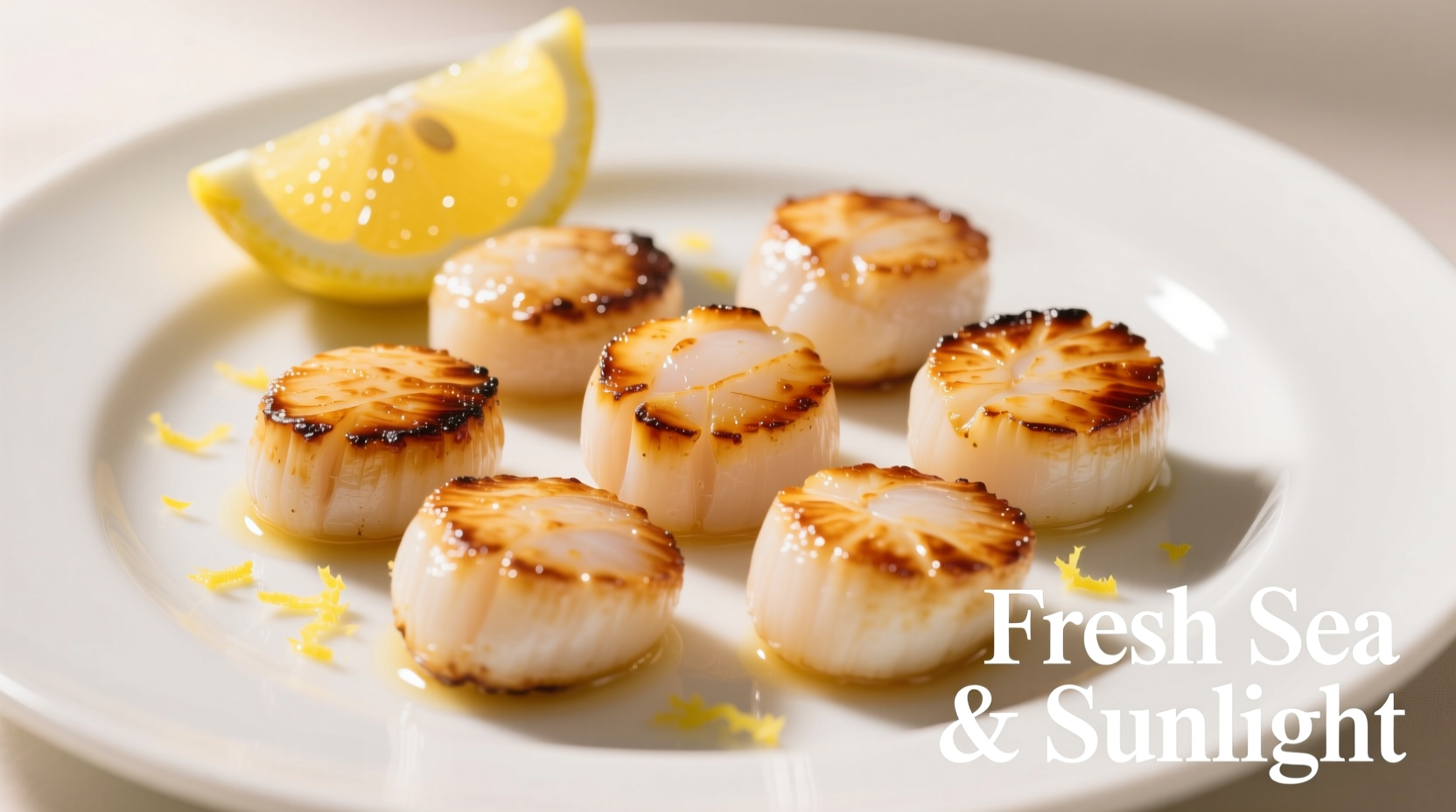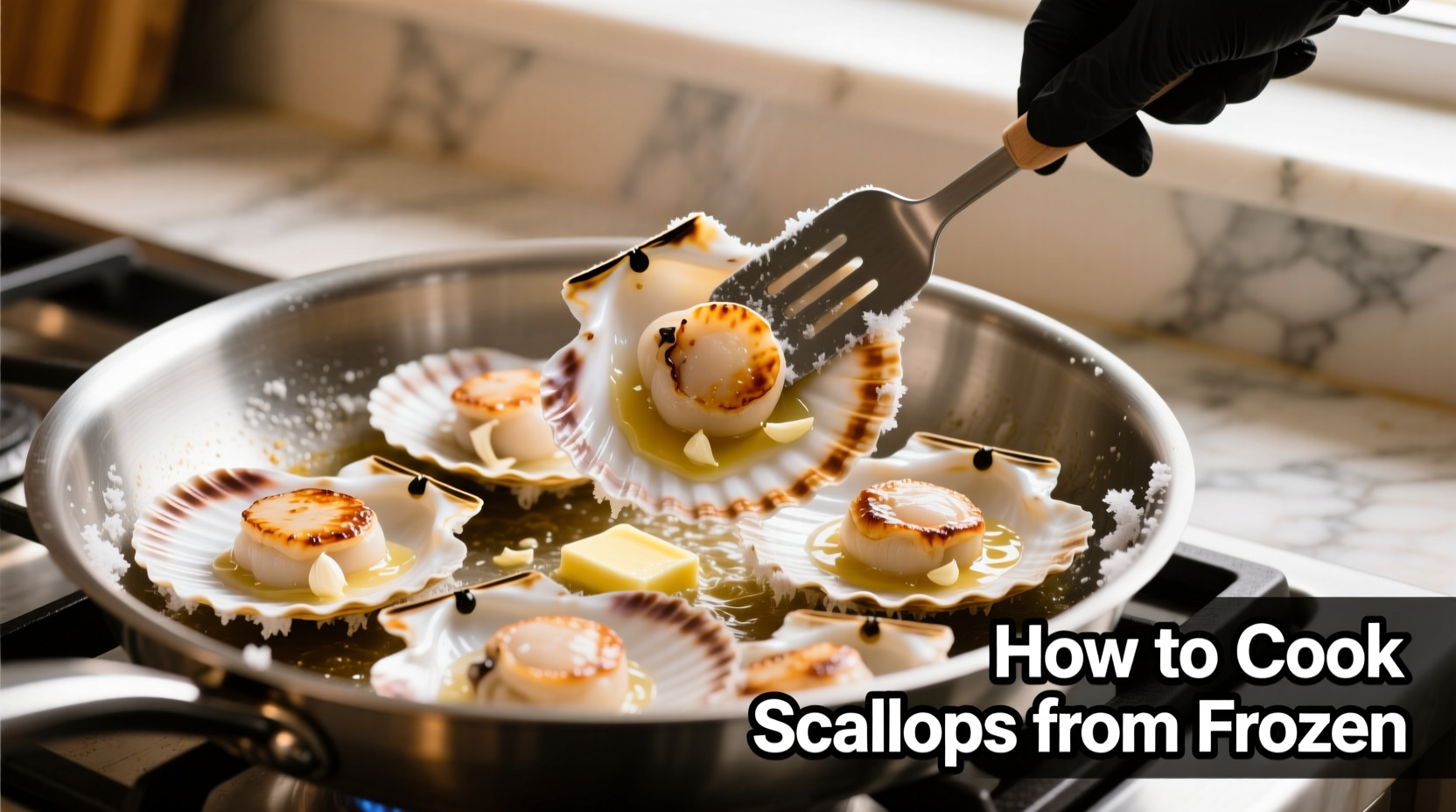Many home cooks assume frozen scallops require thawing before cooking, but with the right technique, you can achieve restaurant-quality results straight from the freezer. As a professional chef with years of seafood experience, I've perfected this method to deliver consistently tender, caramelized scallops without the wait.
Why Cooking Frozen Scallops Works
Cooking scallops directly from frozen isn't just convenient—it can actually produce better results when done correctly. The flash-freezing process locks in moisture, and skipping the thawing stage prevents excess water release that leads to steaming instead of searing. According to the FDA's food safety guidelines, properly cooked seafood reaches a safe internal temperature of 145°F (63°C), which this method reliably achieves.
| Thawing Method | Time Required | Moisture Impact | Texture Result |
|---|---|---|---|
| Refrigerator thawing | 12-24 hours | High moisture retention | Often soggy surface |
| Cold water bath | 30-60 minutes | Moderate moisture absorption | Inconsistent sear |
| Cooking from frozen | 0 minutes | Controlled surface moisture | Perfect golden crust |
Essential Preparation Steps
Before you start cooking, proper preparation makes all the difference in your frozen scallops cooking experience:
Gather Your Equipment
- Cast iron or stainless steel skillet (avoid non-stick for best sear)
- Paper towels or clean kitchen cloth
- Tongs or fish spatula
- Instant-read thermometer
Understanding Your Scallops
Not all frozen scallops are created equal. "Dry-packed" scallops (without added preservatives) work best for this method. If your package says "treated with sodium tripolyphosphate" (STP), expect more moisture release. The USDA recommends checking packaging for these additives as they affect cooking results significantly.
The Step-by-Step Cooking Process
Dry the Scallops Thoroughly
This is the most critical step for how to cook scallops from frozen successfully. Remove scallops from packaging and place on multiple layers of paper towels. Press firmly from all sides for 30 seconds to absorb surface moisture. Replace towels and repeat. Properly dried scallops should feel slightly tacky, not wet.

Season Simply
Sprinkle both sides with sea salt and freshly ground black pepper. Avoid complex spice blends that can burn at high temperatures. Professional chefs recommend seasoning just before cooking to prevent moisture extraction.
Heat Your Pan Correctly
Place your empty skillet over medium-high heat for 3-4 minutes until properly preheated. Add 1 tablespoon of high smoke-point oil (avocado or grapeseed work best) and wait until it shimmers but doesn't smoke. The oil should coat the pan evenly when tilted.
Sear to Perfection
Carefully place scallops in the hot pan, leaving at least 1 inch between them. Cook undisturbed for 2-3 minutes until a deep golden crust forms. Resist the urge to move them—this allows proper caramelization. Flip with tongs and cook for another 1-2 minutes until the internal temperature reaches 120°F (49°C). Remember that carryover cooking will bring them to the safe 145°F (63°C) as they rest.
Context Boundaries: When This Method Works Best
This frozen scallop cooking technique has specific parameters for success:
- Best for: Dry-packed sea scallops (1.5-2 inches in diameter)
- Not recommended for: Very small bay scallops or scallops with high STP content
- Temperature sweet spot: 400-425°F pan temperature
- Critical limitation: Never overcrowd the pan—cook in batches if necessary
Troubleshooting Common Issues
Scallops Stick to the Pan
This happens when the pan isn't hot enough or you move scallops too soon. Wait until they release naturally—this typically takes 2 minutes. If using a properly preheated pan with enough oil, they'll release when ready.
Scallops Release Too Much Liquid
Excess moisture usually means insufficient drying or using wet-packed scallops. Pat extra-dry and consider reducing heat slightly after the initial sear to allow evaporation.
Burning Before Cooking Through
If your scallops are burning on the outside but raw inside, your pan is too hot. Reduce heat to medium after the initial sear, or finish cooking in a 350°F oven for 2-3 minutes.
Serving Suggestions for Perfect Results
Let scallops rest for 2 minutes after cooking—this allows juices to redistribute. Serve immediately with a squeeze of fresh lemon and a sprinkle of flaky sea salt. Pair with simple sides like roasted asparagus or cauliflower puree that won't compete with the delicate scallop flavor.
Frequently Asked Questions
Can you cook frozen scallops without thawing?
Yes, you can cook frozen scallops without thawing. The key is thoroughly drying the surface moisture before searing in a very hot pan. This technique prevents steaming and allows for proper caramelization, resulting in a better texture than thawed scallops in many cases.
How long does it take to cook frozen scallops?
Cooking frozen scallops takes approximately 3-5 minutes total. Sear for 2-3 minutes on the first side until a golden crust forms, then flip and cook for 1-2 minutes more. The exact time depends on scallop size and pan temperature, but they should reach an internal temperature of 145°F (63°C) for food safety.
Why do my frozen scallops become rubbery?
Frozen scallops become rubbery when overcooked or when excess moisture prevents proper searing. To avoid this, ensure your pan is sufficiently hot before adding properly dried scallops, and don't cook beyond 120°F internal temperature before resting, as carryover cooking will bring them to the safe 145°F.
Should I rinse frozen scallops before cooking?
No, you should not rinse frozen scallops before cooking. Rinsing adds unnecessary moisture that prevents proper searing. Instead, thoroughly pat them dry with paper towels to remove surface moisture from the freezing process. This drying step is critical for achieving a good crust when cooking scallops from frozen.











 浙公网安备
33010002000092号
浙公网安备
33010002000092号 浙B2-20120091-4
浙B2-20120091-4